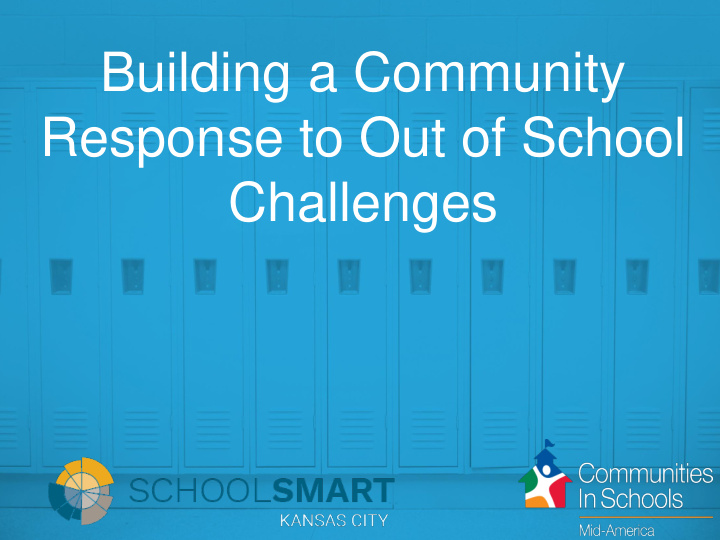



Building a Community Response to Out of School Challenges 1
Who We Are
Communities In Schools History THEN • Started 40 years ago in NYC • Focus on bringing resources into schools NOW • Nationally CIS serves 1.5 million youth in 26 states • CIS of Mid-America serves a five state area in the Midwest 3
CIS Mid-America Key Results School Year 16-17 Stayed in School 99% K-11 Promotion Rate 94% Seniors Graduated 93% Improved Attendance 81% Improved Behavior 83% Improved Academics 78%
How We Work
The Communities In Schools Model 6
School Wide Needs Assessment Needs Assessment: • Completed annually • Identifies school wide goal • Leverages resources to meet existing needs • Drives School Support Plan 7
Student Case Management Student Case Management includes: • One-on-One supports • Individualized Student Needs Assessment • Development of a Student Support Plan • Plan outlines goals and services • Parent consent form required 8
Our Tiered Services of Support Under the Communities In Schools model, the Site Coordinator provides services three ways:
Kansas City Partnership
Kansas City As Priority Area 11
Kansas City Growth Funding CIS Program Funding Partners CIS National SSKC, KCPS, KCNA, Frontier Schools, Crossroads, Guadalupe Schools 50% 50% 12
CIS Programs in Kansas City, MO School Partners: • East High • Northeast High • Central Academy • Northeast Middle • Central Middle • B. Banneker Elementary • G. Melcher Elementary • Frontier School of Innovation Projecting to serve 729 case • Alta Vista High managed students and about 4300 • Kansas City students through school wide Neighborhood Academy services this school year • Crossroads Academy 13
Community Partnerships ➢ City Year ➢ Mattie Rhodes ➢ Harvesters ➢ FDIC ➢ Missouri Care ➢ LINC ➢ Synergy Services ➢ Children’s Mercy ➢ MOCSA ➢ El Centro 14
Initial Assessment Findings
School and Community Risks Identified *11 Kansas City Schools Assessed 16
Case Managed Student Demographics 17
Common Reasons for Referrals in KC • Chronic truancy • Severe discipline/behavior issues • Homelessness/unaccompanied minor • Exposure/experience with gangs/violence/trauma • Lack of access to medical/dental/mental health services • Lack of motivation/interest in school • Substance Abuse 18
Family Risk Factors of Case Managed Students 35% 30% 32% 25% 20% 15% 10% 11% 11% 8% 5% 5% 5% 0% *Data includes preliminary self reported information 19
Student Risk Factors of Case Managed Students 45% 40% 38% 35% 34% 30% 27% 25% 23% 23% 20% 15% 10% 5% 0% Family Emotional / Mental Poor Social Skills Aggressive / No extracurricular disruption/stress Health Concerns Violent Behavior activities *Data includes preliminary self reported information 20
School Resources Areas of Need 100% Area of Need 80% 60% 40% 20% 0% 21
Impact Without Intervention 22
Top Priorities and Recommendations Address student • Trauma support physical and • Conflict resolution social well being Consistent rules • Behavior modification and sanctions for • Discipline intervention students • Alternative learning environments Enhanced access • Career development/enrichment to resources Improved service • Provisions of basic needs coordination • Mentoring/Role models for youth among providers 23
Thank You
Recommend
More recommend